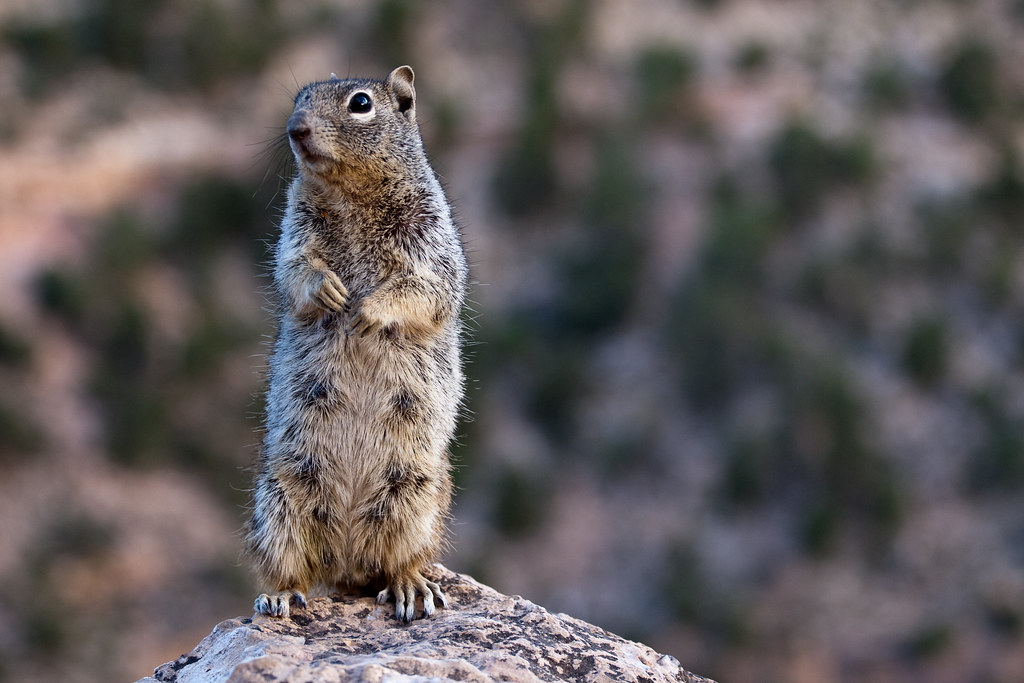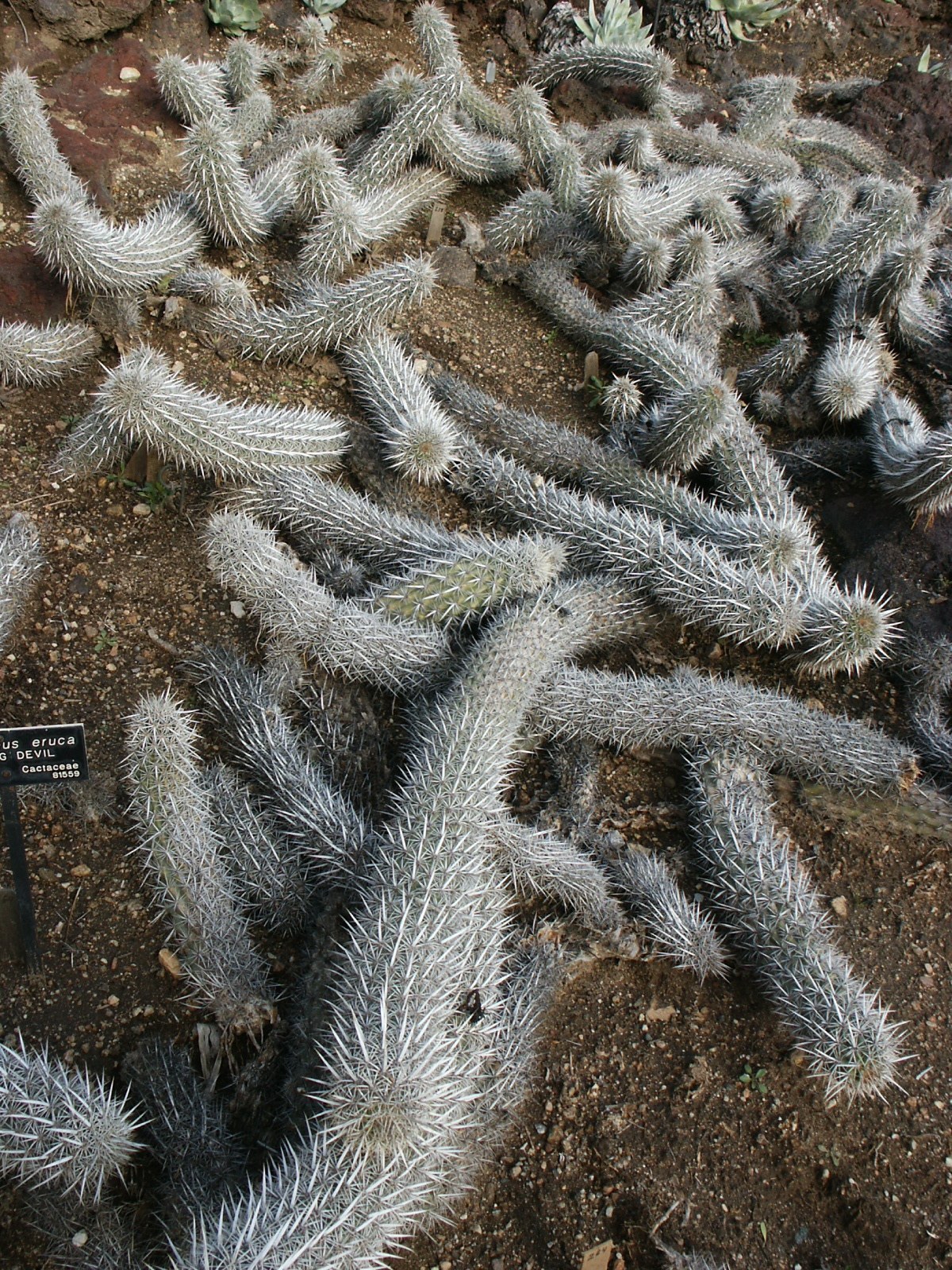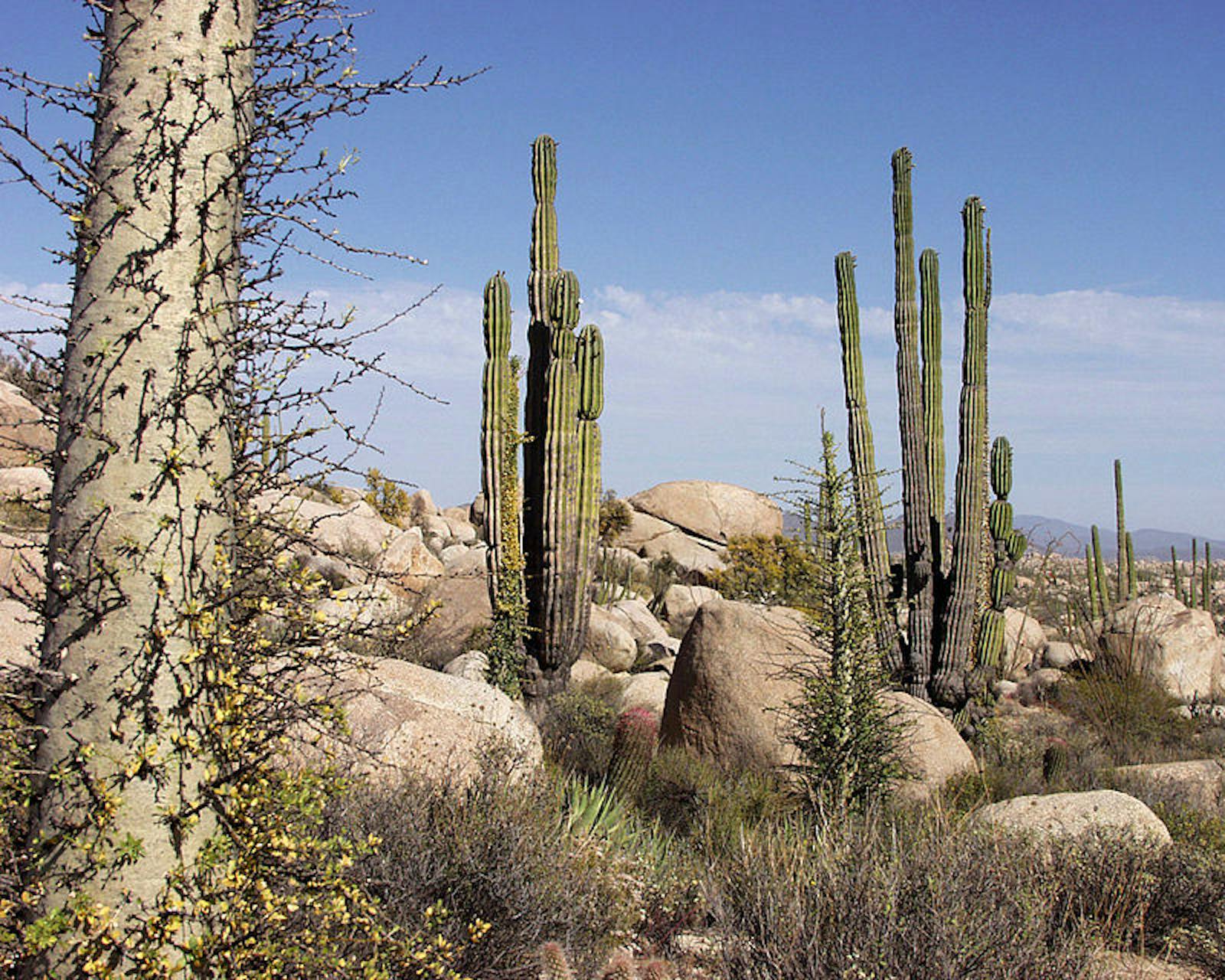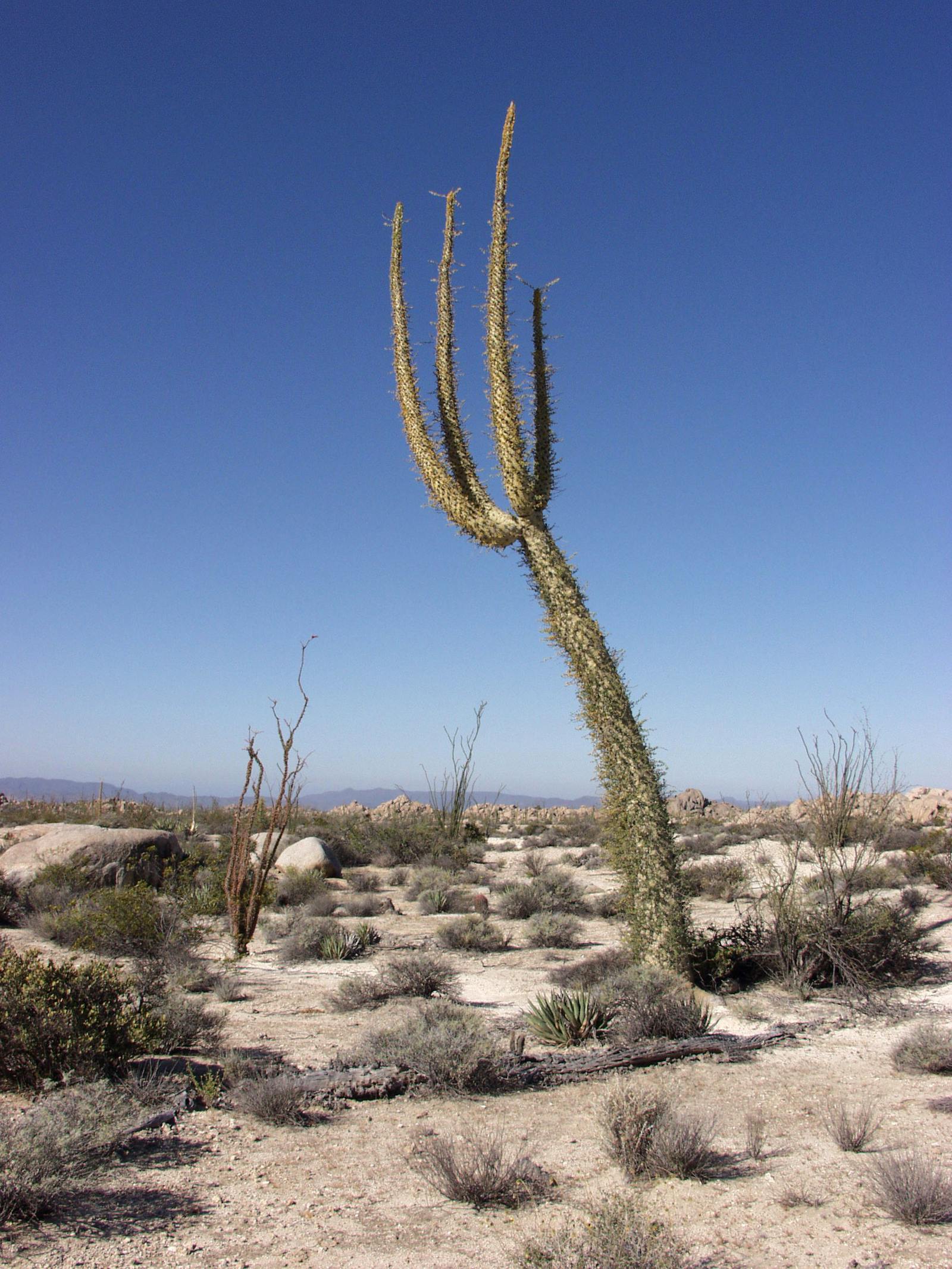Baja California Desert
The ecoregion’s land area is provided in units of 1,000 hectares. The conservation target is the Global Safety Net (GSN1) area for the given ecoregion. The protection level indicates the percentage of the GSN goal that is currently protected on a scale of 0-10. N/A means data is not available at this time.
Bioregion: Baja California & Southern Deserts (NA30)
Realm: Northern America
Ecoregion Size (1000 ha):
7,789
Ecoregion ID:
426
Conservation Target:
73%
Protection Level:
8
States: Mexico: B.C., B.S.
The Baja California Desert ecoregion is one of the wildest and most intact ecoregions in Mexico, occupying most of the Baja California Peninsula and almost all of its western portion in both the states of Baja California Norte and Baja California Sur. To its north and northeast lie the California Coastal Sage and Chaparral and Sonoran Desert ecoregions, as well as the southernmost disjunct patches of the California Montane Chaparral and Woodlands ecoregion.
Its east and southern boundary is with the Gulf of California Xeric Scrub ecoregion. To its west lie the Pacific Ocean and some large patches of the Northern Mesoamerican Pacific Mangroves ecoregion. The defining topographic feature of the Baja California Desert is the north-south mountain ranges, an extension of the Pacific Coast Ranges, which are composed in part of ophiolites, rocks from the oceanic crust that have been thrusted onto the continental plate and are high in ultramafic material (i.e., serpentine). Elevations range mostly from 1,000 to 1,500 m in the mountains and 300–600 m in the plains. There are also large areas of coastal dunes.

The flagship species of the Baja California Desert ecoregion is the Baja California rock squirrel. Image credit: Anders Illum, Creative Commons
This ecoregion has an arid subtropical climate, with hot summers and mostly mild winters. Temperatures in winter are sometimes below freezing but can exceed 40ºC in the interior in summer. Coastal areas are cooler, due to the California Current bringing cold northern waters southward. Some coastal areas rarely exceed 25ºC in summer.
Precipitation is low throughout, but summers bring occasional heavy showers. The driest areas receive less than 50 mm of rain annually.ii Several kinds of dry scrub, subdivided according to their dominant species, are the dominant vegetation of this ecoregion. The higher portions of mountain ranges are covered by thick-stemmed trees and shrubs growing on volcanic soils.
Some dominant plants here are a ragweed, redstem stork’s bill, a milkvetch, and several species of cacti. The near-endemic Boojum tree, a bizarre-looking tree in the ocotillo family, can be found up to 1200 m elevation. Low, humid areas have many epiphytes (plants that grow on other plants) such as ball moss (in the pineapple family), as well as fungi.
Areas that were submerged under the sea during the Miocene Epoch (5.3 to 23 million years ago) are now dominated by salt-tolerant plants such as ragweeds, agave, datilillo (tree yucca), sour pitaya, and bush muhly. Among the plants on sand dunes are creosote bush, dwarf saltbush, skeleton milkweed, ands hole-in-the-sand plant.
As a peninsula, Baja is relatively isolated and gene flow is restricted. Hence, many endemic species have evolved here in isolation. Some 23% of the plant species on the peninsula are endemic, with particularly high levels of evolution and endemism within the mint and ocotillo families. Among invertebrates, bees, scorpions, and spiders show very high levels of endemism.
Endemism in reptiles is also impressive, with endemic and near-endemic lizards including the Baja California legless lizard, three species of whiptails, Viscaino zebra-tailed lizard, San Lucan banded gecko, Baja California collared lizard, Cape spiny-tailed iguana, two rock lizards, two horned lizards, two leaf-toed geckos, Baja California spiny lizard, Baja California brush lizard, and Wiggins’ night lizard.
Endemic mammals include the Baja California rock squirrel and the San Quintin kangaroo rat. Some representative birds are white-winged dove, greater roadrunner, burrowing owl, elf owl, common poorwill, white-throated swift, Costa’s hummingbird, Gila woodpecker, Harris’s hawk, golden eagle, peregrine falcon, crested caracara, black phoebe, verdin, cactus wren, gray thrasher (endemic to Baja Peninsula), phainopepla, loggerhead shrike, pyrrhuloxia, California towhee, black-throated sparrow, and Scott’s oriole. Millions of waterfowl overwinter in the Ojo de Liebre Lagoon along the Pacific coast.

Creeping devils. Image credit: Pamla J Eisenberg, Creative Commons
Altogether, some 60% of the ecoregion is protected, though only 8% of the area outside protected areas is relatively intact. It contains Mexico’s largest protected area, El Vizcaíno Biosphere Reserve (24,930 km2). Despite the largely intact and well-protected status of this ecoregion, it has suffered from heavy cattle grazing, which has displaced populations of mule deer and bighorn sheep, and unregulated hunting, which has reduced populations of puma.
Priority conservation actions for the next decade are: 1) prohibit livestock grazing and other incompatible activities within protected areas and reduce them ecoregion-wide; 2) find a way to control invasive exotic plants, especially buffelgrass, which is deliberately cultivated to feed cattle and has invaded much of this ecoregion; and 3) reduce salt extraction, which has a negative impact on migration and breeding of gray whales.
Citations
1. Southern North America: Baja California Peninsula in Mexico. World Wildlife Fund. https://www.worldwildlife.org/ecoregions/na1301
2. MacMahon, J.A. 2000. Warm deserts. Pages 285-322 in M.G. Barbour and W.D. Billings, eds. North American Terrestrial Vegetation, 2nd edition. Cambridge University Press, Cambridge, U.K.
3. Howell, S.N.G., and S. Webb. 1995. A Guide to the Birds of Mexico and Northern Central America. Oxford University Press, Oxford, U.K.




